Discover serenity through therapeutic painting sessions designed to melt away stress and anxiety. You'll explore mindful nature scenes with soothing mountain lakes and calming ocean waves, using soft colors and gentle brushstrokes to quiet your mind. Express your emotions through abstract color work, create personal safe spaces, and find peace in forest meditation paintings. Let your creativity flow with Zen garden patterns, stress-releasing geometric shapes, and tranquil flower fields. Practice rhythmic brush techniques while painting peaceful landscapes and mandalas. These mindful art exercises will guide you toward deeper relaxation and emotional balance as you release your inner artist.
Mindful Nature Scene Painting
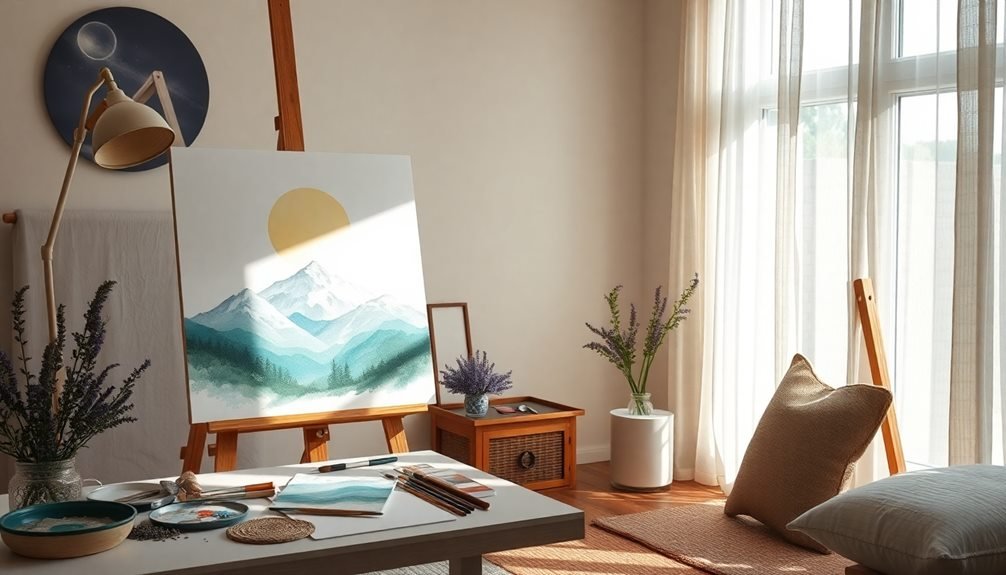
A serene mountain lake serves as the perfect subject for beginning your mindful painting practice. You'll start by selecting calming colors like soft blues, gentle greens, and muted purples that mirror nature's peaceful palette. Set up your workspace with all materials within easy reach, ensuring you won't need to break your focus once you begin.
Before making your first brushstroke, take three deep breaths and center yourself. Start with the sky, using broad, horizontal strokes while focusing on the sensation of brush against canvas. As you paint the mountains, notice how the colors blend and create depth. You're not aiming for perfection – instead, observe how each mark contributes to the whole composition.
When painting the lake's reflection, slow your movements and pay attention to how the water mirrors the landscape above. Add small details like distant trees or gentle ripples only when you feel completely present in the moment.
If your mind wanders, gently return your focus to your brush movements and breathing. This practice combines meditation with artistic expression, helping you release tension while creating something meaningful.
Calming Ocean Waves Exercise
You'll need acrylic paints in various blue and white shades, a large flat brush, and a medium-sized canvas to create your serene ocean scene.
To achieve realistic wave effects, start by blending darker blues at the bottom that gradually lighten toward the horizon, using gentle circular motions with your brush.
Build depth by adding translucent layers of white paint on top of your base colors, creating a rhythmic pattern that mimics the natural flow of ocean waves.
Materials and Setup Needed
Successfully preparing for the Calming Ocean Waves exercise requires just a few basic painting supplies and thoughtful space arrangement.
You'll need acrylic paints in shades of blue, white, and teal, along with a medium-sized flat brush and a smaller detail brush. Select a sturdy canvas board or stretched canvas measuring at least 11×14 inches to give yourself ample space for wave movements.
Set up your painting area near natural light if possible, with a stable easel or flat surface at comfortable height. Place a water container, paper towels, and a plastic palette within easy reach.
Don't forget to protect your work surface with newspaper or a drop cloth. You'll want to wear old clothes or an apron to shield against paint splatters.
For ideal stress relief, arrange your space away from distracting noises and interruptions. Position your supplies in a semicircle around your canvas, keeping frequently used items closest.
Consider playing ocean sounds through headphones to enhance the therapeutic experience. The room temperature should be comfortable, as extreme temperatures can affect both paint consistency and your relaxation level.
Ocean Color Blending Techniques
With your workspace properly arranged, let's begin the calming color work that makes ocean waves come alive. Start by mixing your base colors – ultramarine blue, white, and a touch of phthalo green. You'll want three distinct shades of blue to create depth: a dark tone for deep water, medium for middle distances, and light for shallow areas.
Load your flat brush with the darkest blue and apply it in gentle horizontal strokes across the bottom third of your canvas. While this layer's still wet, blend your medium blue shade just above it, allowing the colors to merge naturally. Don't worry about perfect lines – ocean waves have soft changes.
Now add your lightest blue-white mixture to the top portion, letting it feather downward into the medium tone.
To create wave texture, use your fan brush with white paint. Lightly drag it across your blue layers in curved motions, following the natural flow of water. Add smaller white details with your detail brush, creating foam patterns where waves would naturally break.
Remember to step back occasionally – this helps you maintain perspective and guarantees your ocean scene maintains its therapeutic, flowing quality.
Layering Water Movement
Once your base ocean colors have settled, the next phase focuses on creating lifelike water movement through strategic layering. Start by using your flat brush to apply gentle horizontal strokes with a lighter blue shade, creating the illusion of surface ripples.
You'll want to work quickly while the base layer is still slightly damp for seamless blending.
Next, add depth to your waves by introducing white paint mixed with a touch of pale blue. Apply these highlights using short, curved strokes that follow the natural flow of water.
Don't worry about perfect symmetry – ocean waves are naturally irregular. Layer these strokes gradually, building from darker to lighter tones.
For the wave crests, use your smallest brush to add pure white details in quick, confident strokes. You'll create foam patterns by dabbing and pulling the paint outward.
Remember to vary the pressure of your brush – lighter pressure creates misty spray effects, while firmer strokes define stronger wave movements.
As you work, step back occasionally to check how the layers interact. If needed, soften harsh shifts with a slightly damp brush, allowing the movements to flow naturally across your canvas.
Abstract Emotions Through Color
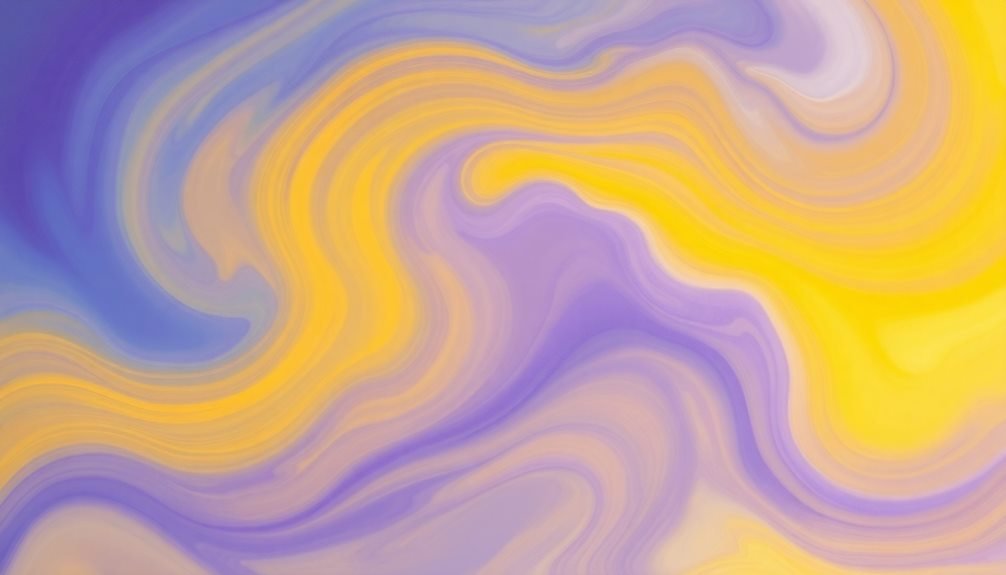
Colors serve as powerful tools for expressing complex emotions that may be difficult to verbalize. Through abstract painting, you'll learn to channel your feelings into vibrant hues and dynamic color combinations that reflect your inner state.
When you're feeling anxious, cool blues and soft greens can help you create calming compositions, while bright yellows and warm oranges might express joy or optimism.
Don't worry about creating recognizable forms or perfect shapes. Instead, focus on how different colors make you feel and let your emotions guide your brush strokes. You can experiment with color intensity by varying the pressure of your brush or adding white to create softer tones.
If you're experiencing intense emotions, bold reds or deep purples might dominate your canvas, while periods of peace might inspire lighter, more ethereal color choices.
Try working with complementary colors to express emotional contradictions, or blend similar hues to explore nuanced feelings. As you paint, notice how certain color combinations resonate with your current emotional state.
This process helps you externalize and process complex feelings while creating meaningful abstract artwork.
Paint Your Safe Space
Creating a visual representation of your personal safe space lets you build a tangible mental haven you can revisit whenever stress strikes.
You'll want to choose colors that bring you peace and serenity, whether that's soft blues reminiscent of ocean waves or warm earth tones that remind you of a cozy room.
As you paint your sanctuary, focus on including elements that make you feel protected and calm, from a favorite reading nook to a sun-drenched garden.
Building Your Mental Haven
Throughout our lives, we search out for spaces that bring us comfort and peace. Building a mental haven through therapeutic painting helps create a tangible representation of your ideal sanctuary. This practice combines mindfulness with creative expression, allowing you to explore and manifest your safe space on canvas.
Start by visualizing the elements that make you feel most secure. You'll want to incorporate specific details that trigger positive emotional responses – perhaps it's the warm glow of sunset through your grandmother's kitchen window or the gentle sway of palm trees at your favorite beach.
As you paint, focus on capturing these sensory experiences: the colors, textures, and shapes that resonate with your sense of safety. Your mental haven doesn't need to reflect reality perfectly. Instead, let it evolve as you paint, adding elements that enhance your feeling of security.
Include symbols of protection, comfort, or peace that hold personal meaning. You might paint a protective circle of light, nurturing natural elements, or meaningful objects that ground you. This painted sanctuary becomes a visual anchor you can return to whenever you need to reconnect with your sense of safety and calm.
Finding Colors That Calm
When we select paint colors for our therapeutic sessions, understanding their psychological impact helps create a more effective sanctuary. You'll want to focus on hues that naturally lower anxiety and promote inner peace.
Blues and greens, which mirror nature's calming elements like water and forests, can greatly reduce stress levels and lower blood pressure.
Consider incorporating soft lavender tones, which research shows can decrease heart rate and promote relaxation. Gentle earth tones, including warm beiges and soft browns, can help ground you and create a sense of stability.
You'll find that pale yellows can lift your mood without overwhelming your senses, while muted coral tones can provide gentle warmth and comfort.
As you paint, you don't need to limit yourself to just one color. Try blending these calming hues to create subtle gradients that feel natural and soothing.
Start with a base color that resonates most strongly with you, then gradually introduce complementary shades.
Remember to avoid harsh, saturated colors that might increase agitation. Instead, opt for softer, more muted versions of your chosen palette to maintain the therapeutic benefits of your painting session.
Healing Forest Meditation

Deep within a serene forest setting, your paintbrush becomes a conduit for tranquility as you commence a healing meditation practice. Begin by visualizing towering trees with sunlight filtering through their emerald canopies. Let your brush dance across the canvas, creating gentle strokes that mirror the swaying branches above.
As you paint, focus on the forest's natural rhythms. Layer deep greens and browns to capture the earthy essence of tree bark and moss-covered stones. You'll find that each brushstroke connects you more deeply to nature's healing energies. Add touches of golden light breaking through the leaves, representing moments of clarity and peace in your own journey.
Don't worry about perfect technique – instead, let your intuition guide your hand as you blend colors that reflect the forest's calming presence. Create soft edges where treetops meet the sky, and incorporate small details like woodland flowers or fallen leaves.
As you work, breathe deeply and imagine yourself surrounded by the protective embrace of ancient trees. This meditation through painting helps release tension while fostering a profound connection to nature's restorative power.
Sunset Gradient Therapy
Moving from the forest's embrace to the open sky, the dramatic hues of sunset offer another powerful avenue for artistic healing. You'll find that painting sunset gradients can help release emotional tension while creating something beautiful. The technique focuses on blending warm colors that mirror nature's most enchanting light show.
To begin your sunset gradient therapy session, you'll need to select colors that resonate with your current emotional state. Start with darker shades at the bottom and work your way up to lighter tones, allowing each stroke to represent a release of stress.
| Color Combination | Emotional Response |
|---|---|
| Purple to Pink | Calming, Nurturing |
| Orange to Yellow | Energizing, Joyful |
| Red to Gold | Grounding, Powerful |
The key is to let your brush flow naturally, without forcing perfection. As you blend each color into the next, focus on your breathing and allow any negative thoughts to dissolve into the canvas. You'll notice that the repetitive motions of creating gradients help quiet your mind while the sunset colors activate your parasympathetic nervous system, promoting relaxation.
Zen Garden Brushstrokes
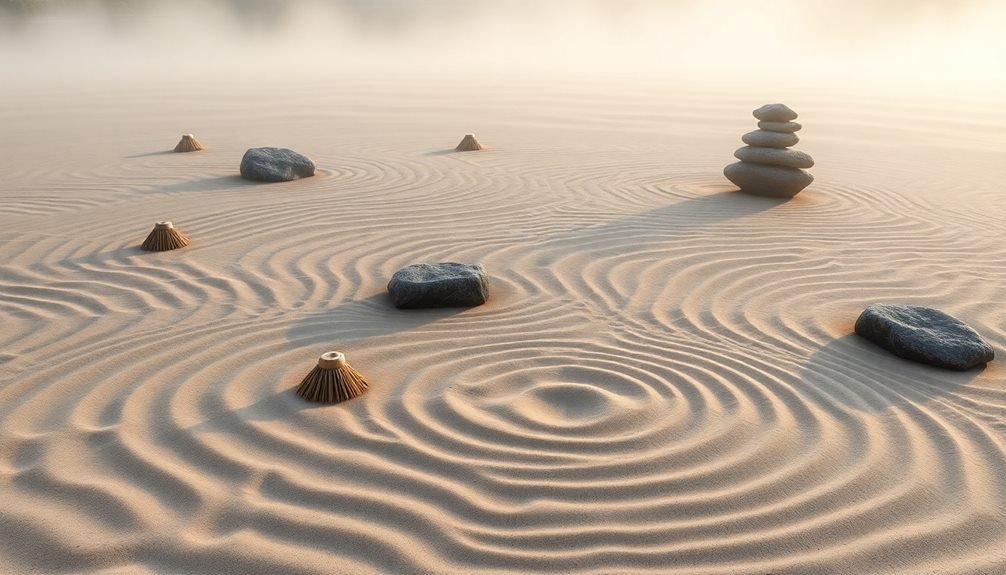
The ancient practice of Zen garden brushstrokes brings mindful serenity to your painting therapy sessions.
You'll discover how rhythmic brushwork can mirror the calming patterns found in traditional Japanese rock gardens, creating a meditative state that reduces anxiety and promotes inner peace.
As you begin your Zen garden painting practice, focus on creating deliberate, flowing lines that represent the essence of natural elements.
You'll use specific brush techniques to capture the tranquil essence of raked sand, weathered stones, and mindfully placed elements.
- Start with broad, sweeping strokes using a flat brush to create the foundation of your sand patterns
- Layer gentle curved lines with a round brush to represent the rippling effects of water
- Add dotted textures using a dry brush technique to capture the rough surface of rocks
- Create intersecting parallel lines with a fine brush to mimic the precise rake patterns
- Incorporate negative space between elements to allow your composition to breathe
Your brushstrokes should flow naturally, without force or hesitation.
Let each movement become a mindful meditation, allowing your breathing to sync with your painting rhythm.
Releasing Stress Through Patterns
Exploring repetitive patterns in your art session can tap into your mind's natural urge for order and tranquility.
You'll find calming solace in the methodical flow of creating mandalas and geometric shapes, where each stroke builds upon the last to form harmonious designs.
Whether you're working with circles, squares, or intricate lattices, the meditative quality of pattern-making lets you release tension while engaging in a mindful creative process.
Rhythm and Flow Techniques
Rhythmic brushstrokes and repeated patterns serve as powerful gateways to mental relaxation during therapeutic painting sessions.
When you engage in flow techniques, you'll discover how the repetitive motion of your brush can synchronize with your breathing, creating a meditative state that dissolves tension and worry.
To achieve this calming rhythm, focus on continuous, fluid movements that feel natural to your body. You'll notice your muscles relaxing as you develop a steady painting tempo, much like the soothing effect of gentle waves or a peaceful heartbeat.
- Start with long, sweeping strokes from left to right, maintaining an even pressure on your brush
- Create circular motions that spiral outward from a central point, letting each circle flow naturally into the next
- Layer parallel lines with varying colors, allowing each stroke to blend seamlessly with the previous one
- Paint rhythmic dots or dashes in a wavelike pattern across your canvas
- Practice alternating between light and heavy pressure to create dynamic, flowing textures
This mindful approach to painting helps you establish a deep connection between your physical movements and emotional release, enhancing the therapeutic benefits of your creative practice.
Mandala Drawing Benefits
Creating mandalas offers a uniquely powerful approach to stress reduction through structured, symmetrical patterns that engage both hemispheres of your brain. When you draw these circular designs, you'll tap into an ancient practice that naturally guides you into a meditative state, helping lower your heart rate and blood pressure while increasing focus and mental clarity.
As you work from the center outward, you'll notice how the repetitive nature of mandala creation helps quiet your mind. The process activates your parasympathetic nervous system, triggering your body's natural relaxation response. You don't need artistic talent to benefit – simple geometric patterns work just as effectively as complex designs.
The circular format provides a contained space that feels safe and manageable, making it easier to express emotions you might find difficult to verbalize. You'll find that different color choices and patterns reflect your current emotional state, offering valuable insights into your mental well-being.
Regular mandala practice can improve your concentration, boost creativity, and reduce anxiety. Start with basic shapes and gradually experiment with more intricate patterns as your confidence grows. You'll discover that this mindful practice becomes more rewarding with each session.
Geometric Shape Meditation
Through geometric shape meditation, you'll discover a powerful stress-relief technique that builds on simple forms like triangles, squares, and circles. As you paint these basic shapes, your mind naturally shifts into a contemplative state, allowing stress to dissolve through repetitive, mindful movements.
Your brush strokes become a form of moving meditation, creating a bridge between artistic expression and inner peace.
When practicing geometric shape meditation, focus on these key elements:
- Start with a single shape, repeating it slowly and deliberately across your canvas while maintaining steady breathing.
- Layer different shapes to create intricate patterns, letting each new addition flow naturally from your intuition.
- Use colors that resonate with your current emotional state, allowing them to blend and interact.
- Pay attention to the negative space between shapes, treating it as equally important as the forms themselves.
- Notice how your body responds as you create, releasing tension with each completed pattern.
This meditative approach transforms simple geometric forms into powerful tools for emotional release, helping you process complex feelings through structured artistic expression.
Each session strengthens your ability to find calm through creative focus.
Peaceful Mountain Landscapes
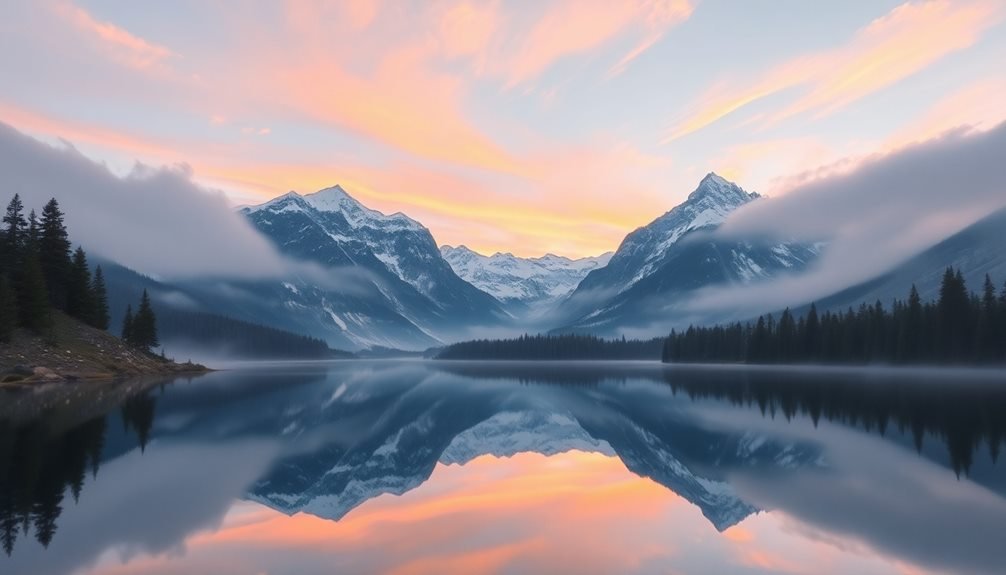
Amid towering peaks and misty valleys, mountain landscapes offer an ideal starting point for therapeutic painting sessions. You'll find that mountains provide a natural composition with their layered planes, making them perfect for beginners and experienced artists alike.
Start by choosing cool blues and grays for distant peaks, then work your way forward with warmer earth tones for the closer ridges. As you paint, focus on creating depth through atmospheric perspective. You'll notice how distant mountains appear lighter and bluer, while closer ones show more detail and darker values.
Begin with broad strokes for the sky, then layer in the mountain silhouettes from back to front. Don't worry about perfect details – the therapeutic value comes from the peaceful process of building these layers.
Add simple elements like pine trees or a meandering path to enhance the scene's tranquility. You can also incorporate gentle clouds or morning mist to soften harsh lines. Remember to leave some white space for snow caps or bright spots where sunlight hits the peaks.
This practice helps you develop patience while creating a serene visual escape.
Gentle Flower Field Expression
Nature's delicate wildflowers provide an excellent subject for expressive, stress-relieving painting. You'll find that flower fields offer endless possibilities for creative expression while maintaining a gentle, calming atmosphere. As you paint, let your brush dance across the canvas, creating soft petals and swaying stems that mirror your emotional release.
Choose colors that speak to your current mood, whether it's peaceful lavenders and whites or vibrant yellows and pinks. Don't worry about perfect representation – focus instead on capturing the essence and movement of the flowers.
- Start with a soft background wash using diluted paint in cool blues or warm sunset tones.
- Layer loose, circular brushstrokes to form flower heads, varying their sizes and positions.
- Add stems using upward flicking motions with a thin brush.
- Create depth by dotting darker colors in flower centers.
- Finish with light, airy touches of white or pale colors for highlight details.
Remember to breathe deeply as you paint, allowing the natural rhythm of your brushstrokes to sync with your breath. This meditative approach helps release tension while creating your personal interpretation of nature's beauty.
Frequently Asked Questions
Do I Need Previous Painting Experience to Attend Therapeutic Painting Sessions?
You don't need any prior painting experience. These sessions focus on personal expression and emotional release rather than artistic skill. You'll receive step-by-step guidance and support throughout the entire creative process.
What Type of Paint and Materials Should I Bring to Class?
You don't need to bring anything – the instructor will provide all materials including acrylic paints, brushes, canvases, and aprons. They'll supply everything needed for your session, so just come ready to create.
How Long Does Each Therapeutic Painting Session Typically Last?
You'll spend about 90 minutes in each session, giving you plenty of time to learn techniques, express yourself, and complete your artwork. Some studios offer shorter 60-minute or longer 2-hour options.
Are Group Sessions More Beneficial Than Individual Therapeutic Painting Sessions?
You'll find both session types offer unique benefits. Group sessions provide social support and shared experiences, while individual sessions let you focus deeply on personal expression and receive undivided attention from your instructor.
Can Therapeutic Painting Help With Specific Mental Health Conditions Besides Stress?
You'll find therapeutic painting can help manage depression, anxiety, PTSD, and emotional trauma. It lets you express feelings without words, boosts self-esteem, and provides a sense of accomplishment through creative expression.
In Summary
You've discovered powerful ways to manage stress through therapeutic painting. By exploring nature scenes, abstract emotions, and mindful techniques, you're now equipped with creative tools for relaxation. Whether you're painting peaceful landscapes or expressing feelings through color, these 10 guided sessions will help you find calm whenever you need it. Remember, your artistic journey isn't about perfection – it's about finding peace through self-expression.

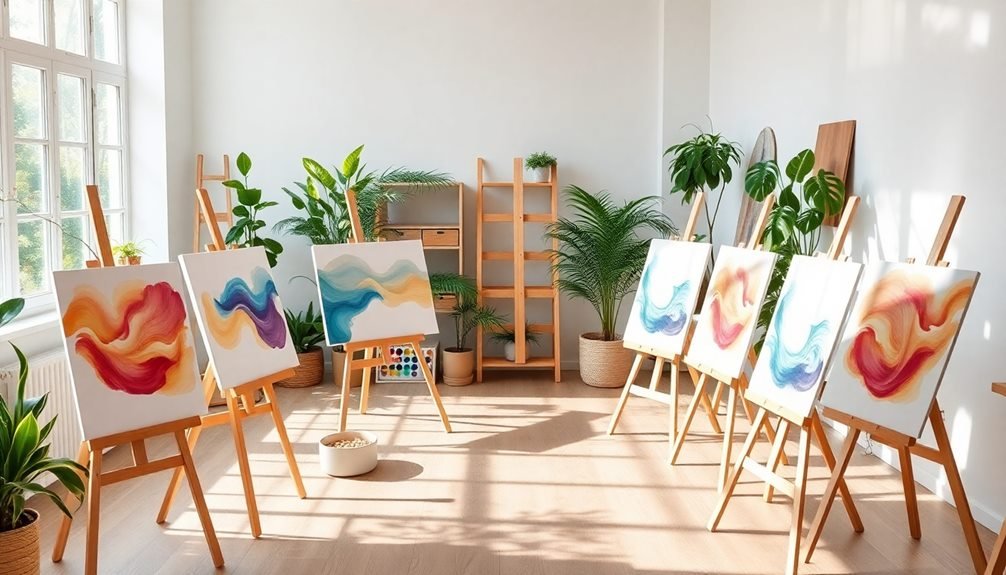
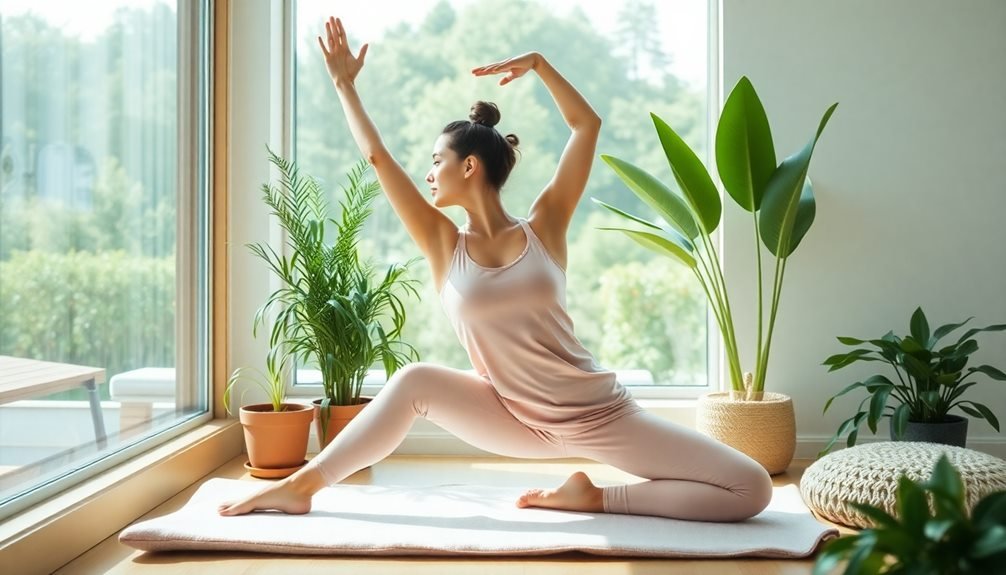
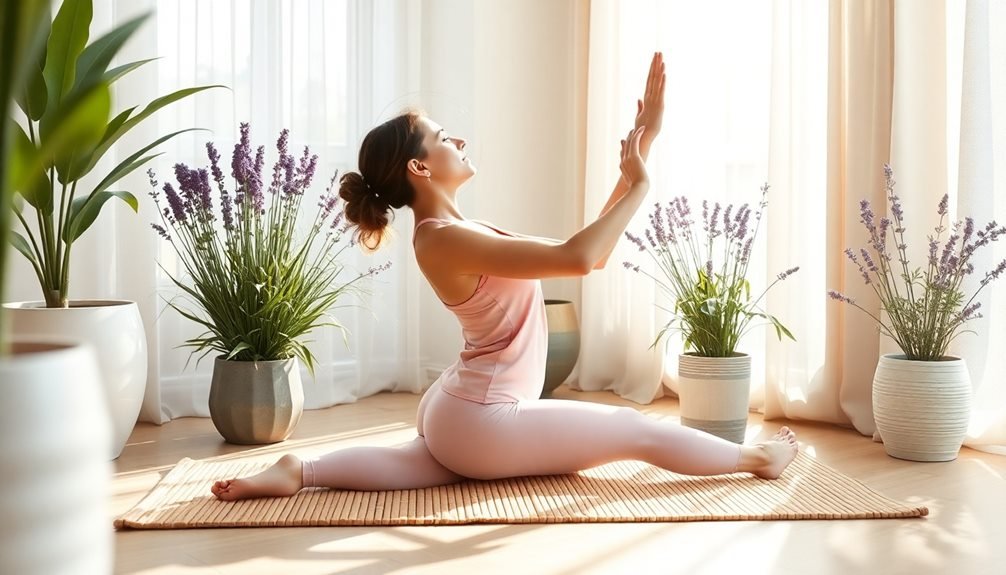
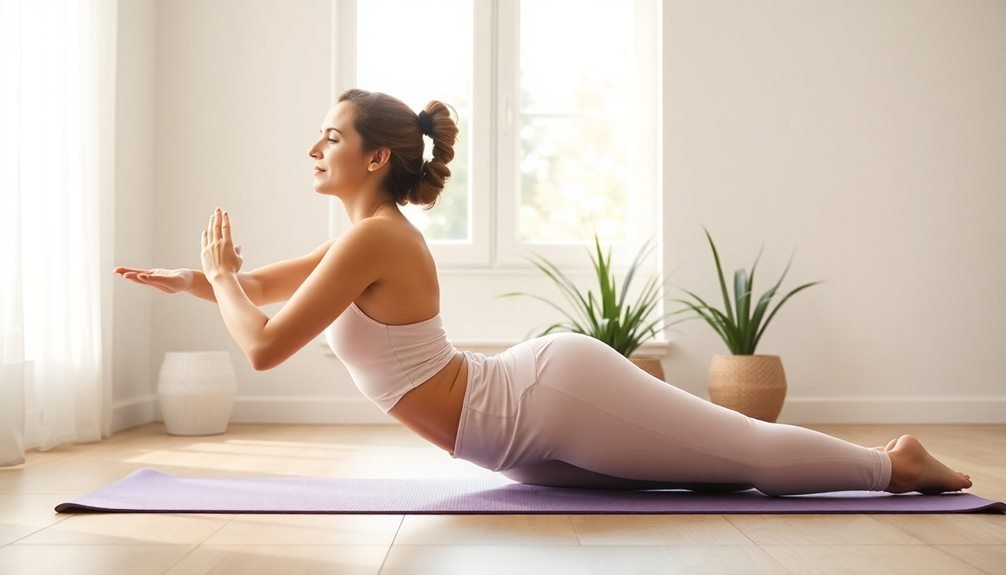
Leave a Reply